|
|
Diego Fernández Gabaldón: Exhibits:
Diego Fernández Gabaldón, is a
humanitarian worker with the United Nations
World Feed Programme (WFP) currently
based in Nairobi, Kenya, He has served in
Darfur, Sudan (2004 — 2007), West Timor,
lndonesia (2008) and Afghanistan (2010 —
2011). While living in communities
devastated by tragedy, Diego gathered
images of the day-to-day life of Darfurians,
West Timorese and Afghans, capturing their
beauty, resilience and humanity. Born in
Santa Cruz de Tenerife, Spain, Diego is economist by profession, and worked with
the Spanish Embassies in Iraq and Thailand,
before joining WFP.
Diego's photo exhibits, photo credits and
web exposure are as diverse as his work
experience:
In Khartoum: “The Eyery Day of Darfur”
(exhibit) - 2006;
In Tenerife, his home town: “Images in
Cooperation” (exhibit) — 2007, “Amnesty
lnternational Caring Photography” (exhibit) —
2007, and “An open Window” (exhibit) — 2009;
In the United States, opening in New Orleans,
Louisiana: “The Art of Caring: A Look at Life
through Photography", as part of an rotating
exhibit, including photographers Annie
Liebovitz and William Wegman — 2009 — 2011;
In Rome, Italy: "Frammenti di Dolore" — a
theatre piece which utilized his images of
Darfurian women — 2008;
In the Dominican Republic:
“Portraits of Darfur", an article published
by U magazine — 2008;
In Spain: his pictures have illustrated
numerous articles: “The Janjaweed Control”
(El País, 2000); “Smiles in Dartur” (El Pais,
2007) “On the Humanitarian Frontline“ (El Día,
2006}; “The Next Planet" (El Día, 2006);
Via CNN : “Amid Darfur's Desperation, Little
Joys" article and interview) - 2007;
Via international aid organizations in print and
via the web, including: UN World Food
Programme annual reports 2006 & 2007;
Office of the Coordination of Humanitarian
Affairs (OCHA) — 2008; UN WFP Darfur
Operational Handbook — 2009; and UN WFP Ready te Help — 2009.
Camps in Sudan:
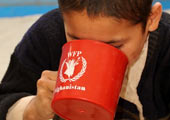
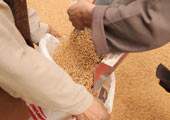
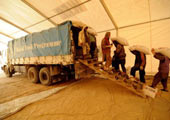
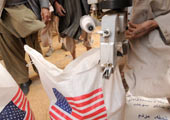
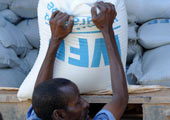
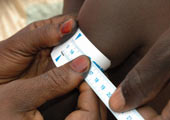
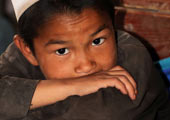
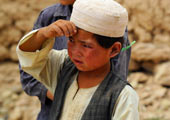
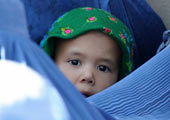
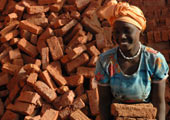
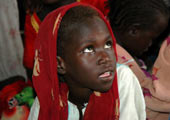
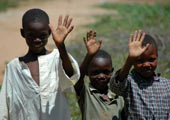
Dadaab refugee camps are located
in northeastern Kenya, about 470
km from Nairobi and 100 km from
the Somalia border. The three camps
Dagahaley, Ifo and Hagadera were
established in 1991, subsequent to
an influx of Somali refugees fleeing
civil war. The Kenya—Somalia border
has remained officially closed since
early 2007. However, the camps
continue to experience an influx of
asylum seekers. At the peak of the
2011 crisis, more than 1,200
Somalis (mostly women and
children) arrived daily in Dadaab,
fleeing famine in southern Somalia.
Currently the camps host about
473,000 registered refugees.
Kakuma refugee camp is situated in
Turkana District, in northwestern
Kenya. It is about 850 km from
Nairobi, and 150 km south of the
Sudanese border. The camp was
established in July 1992 initially to
cater for Sudanese refugees fleeing
the conflict in Sudan, but gradually
opened upto other nationals as the
need arose. Since 2005, UNHCR
has a voluntary repatriation exercise
which has led to assisted return of
more than 5,000 south Sudanese.
Many more have reportedly returned
spontaneously. Current population is
102,000 registered refugees.
Somalis are now the majority
refugees in Kakuma (53 percent)
after UNHCR relocated some of
them in 2010 in order to clecongest
Dadaab, Since the signing of the
Comprehensive Peace Agreement
in 2005, many South Sudanese
have either being voluntary
repatriated by UNHCR or returned
spontaneously home. However,
given the recent conflict and
humanitarian crisis in South Sudan,
the number of new arrivals has
increased from an average of
100/week to about 500/week in
Febmary 2012.
WFP provides food assistance to
the refugees as well as host
communities living around Dadaab
and Kakuma camps. In addition to
the general food rations, WFP
provides extra support for vulnerable
and malnourished children as well as
for pregnant and breast-feeding
women through supplementary
feeding programs.
[ Inicio | Links | ONG | FAO | Pobreza | Ayuda exterior | Africa | Hambre | Autores | Diego FG ]